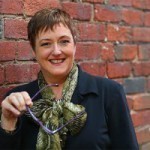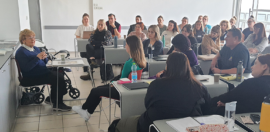Homelessness for Older Australian Women a ‘Sleeping Giant’

10 November 2016 at 10:07 am
Ongoing research into a growing housing crisis among Australia’s ageing baby boomer women, especially in regional Australia, has identified the problem as a “sleeping giant”.
Researchers Sandy Darab and Yvonne Hartman from the School of Arts and Social Sciences at Southern Cross University in Lismore in NSW are completing new research into an issue they say is finally gaining some essential visibility.
The pair began researching older women’s housing in 2011 and published the first report, called Understanding Single Older Women’s Invisibility in Housing Issues in Australia, in 2013. That research found that ageing and single status are compounding factors which place non-home owning women at higher risk of homelessness or inappropriate housing. They spoke to Pro Bono Australia News about their most recent research findings.
Darab says academics are now working on raising the lid on the invisibility around older women’s precarious housing, which is “surprisingly showing up in significant numbers in regional Australia” if their latest research in the New South Wales region of the Northern Rivers is any indication.
“We knew this was a massive problem in metropolitan areas and we were interested to see if it was present in the regions… because there is a whole different set of circumstances including transport, employment and many other issues. So we didn’t know what we would find until we started this research project,” Darab said.
“We are the only researchers that we know of who have been studying this phenomenon in the regions and what we have found is that it is a massive problem. When we advertised for participants… we were overwhelmed with women calling us… from interstate and all over the place. It really is like a sleeping giant.”
Hartman says they found that baby boomers, as they come to retirement, are really finding it difficult.
“As they come to the end of their working lives and because of their backgrounds with women’s role as carer, and the way it was structured in the last century, women tend to come to the end of their working lives without the same financial resources as men, due to gender inequality in wages etc.,” Hartman said.
“Even women when they divorce, and get a very good settlement with the house, most of them can’t actually maintain it or keep the payments up and many lose their home and end up renting and that just becomes untenable when they only have a pension to rely on.
“People get very overwhelmed with what’s going to happen to them. However they have lots of ideas about their housing preferences. They don’t want the brick home, a three-bedroom home. It’s not what they want at all.
“In our research we found that the vast majority of them want their own space and they don’t want to share. We were very surprised by that. They want a place they can have their grandchildren come to; not a massive place, but they do also want to share a common area or live in close proximity to other people and perhaps share a garden.”
Hartman says, as they have been finalising their most recent research, they have discovered that no one has asked the women about their housing preferences.
Additionally, she says many of the women won’t seek help until they are in a “very, very bad situation” because “they are ashamed that they don’t have anywhere to live and are reluctant to go to service providers until they’re in a bad way”.
“By then they have multiple and complex problems and it is much more difficult to help them,” she said.
“We have kept our research to women in the Northern Rivers region. But a Canberra study previously found that a lot of their participants were highly educated and had high level jobs and were still facing this situation if they didn’t own a home.”
As their latest research is being prepared for publication, Darab and Hartman say they would very much like to have discussions about their findings with policy makers and not-for-profit organisations working in this area.
“We have had contact with the Queensland minister for housing and [the department of] public works… who were working on a transition to housing plan for older Queenslanders and we would very much welcome working with other policy makers and being able to input into their plans,” Darab said.
In 2014, the issue of older women becoming the “hidden homeless” was also reflected in a report commissioned by social justice group, the Mercy Foundation and conducted by QUT researchers.
The report, Older Women’s Pathways Out of Homelessness in Australia, found anecdotal evidence that older women in Australia were increasingly at risk of becoming homeless, primarily because of poverty and unaffordable housing.
In October 2016, not-for-profit organisations joined forces to address what they said was a knowledge gap around an increasing number of older women experiencing homelessness.
The St Vincent de Paul Society NSW brought together a group of experts to tackle what the welfare charity described as “the hidden crisis of homelessness facing older women”.
President of St Vincent de Paul Society NSW Denis Walsh says there is a vacuum of information and research on the issues facing older women and homelessness.
At the same time Mission Australia urged the federal government to take action to reduce the number of older women becoming homeless as part of International Day of Older Persons on 1 October.
Mission Australia’s CEO Catherine Yeomans warns that without an increase in appropriate affordable housing, the numbers of vulnerable older women without a safe place to live would continue to climb in Australia.
“We know from our services and the wider sector that this is a growing problem,” Yeomans said.
The latest research by Darab and Hartman is expected to be published by the end of 2016.
“I think it is very important single older women wanting housing are taken into consideration,” Darab said.








Leaving domestic violence many years ago with two small children, I have experienced it all. Shoddy rentals, a few years in community housing, financial disadvantage, poverty and the constant reminder that my future as an older women is fast approaching.
I really just took the perspective, that I must just get on with it and do the best I can.
Working within the community services sector, I was well aware of the challenges ahead, because I have worked with individuals constantly who are just trying to survive, so I was well equipped and educated to manage. Whilst in community housing I became a member on a board and was sent to a conference “Women, Housing & Homelessness” around 8 years ago. I attended as a professional, but as a single parent & woman I very quickly realized that this conference was clearly highlighting my life and the journey before me. I felt the wave of panic and the feelings of defeat overcome me, as I realised, although I am educated, have employment and work hard, my future was destined for homelessness. I have suffered severe financial hardship, financial abuse at the hands of my ex-husband and this would dictate my future.
I did overcome these feelings and worked even harder to try to to build my financial future. I budgeted better, I stopped social outings, I saved money, where others would not find it possible, I eventually purchased a property, in rural Victoria, with limited support, very little opportunity for work, in an area that has a number of social problems and that I am very aware that I will probably never own and lie awake at night with the constant worry of being homeless.
This is a very real plight of many women, no we are not drug users, alcoholics, gamblers, unemployed dole bludgers as many would like to label us, we are women who have ambition and drive, we are mothers first, who are surviving unbearable challenges, often thrust upon us, not necessarily of our own choosing.
Hi
I am homeless, but at least I have a caravan to live on the road in.
ANd yes there are a LOT of homeless males and females doing it tough out there, and most people sleeping in cars are very discrete, especially as most Councils will hassle you. John
Yes i too have travelled the same road as a single parent with help from my parents